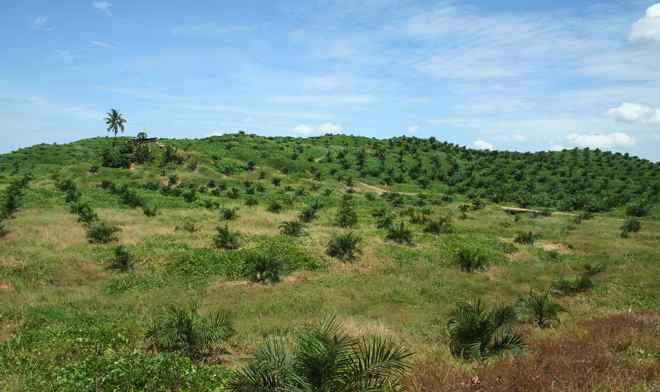Malaysia produces 39 percent of the world’s palm oil. A recent Washington Post article reported that “life here has improved tremendously,” referring to changes in the Malaysian economy with the rise of the palm oil industry. According to a U.S. Department of Agriculture (USDA) report, palm oil production has expanded from occupying a little more than half a million hectares of land in 1975 to nearly five million today. The industry expansion poses threats of environmental damage and unethical labor practices.
A study by Yale and Stanford researchers found that the slash-and-burn land-clearing methods used to harvest palm oil in the Borneo forests of Malaysia and Indonesia accounted for 140 million tons of carbon dioxide emissions in 2010, which makes Indonesia the third-largest carbon-emitting country in the world. A two-year ban on Indonesian deforestation seemed to have had little impact, given weak legislation.
The immediate carbon emission damage to the environment is clear, but the longer-term impacts are subtler. A 2005 report from the Center for Science in the Public Interest enumerates the damages from palm oil production, including depletion of plant and animal life from loss of habitat, and damage to aquatic wildlife from palm oil mill runoff.
Migrant workers from Indonesia make up much of the labor used by Malaysian palm oil businesses. These workers, according to an Amnesty International report, have few rights, poor working conditions, and are often children. Half of the labor population is undocumented, barring access to government benefits like education or health care. Worse, many are forced to work in order to pay back the loans they needed to immigrate into Malaysia, and are treated as indentured servants.
In 2003, the Roundtable on Sustainable Palm Oil (RSPO) was founded. The organization generated guidelines for sustainable palm oil production, and now does certification, advocacy and research around palm oil. The RSPO aims to reduce deforestation, preserve biodiversity, and respect the rural communities that large-scale businesses undermine. A key feature of sustainable palm oil is increasing productivity: many swaths of land operate well below ideal yield because of poor management practices. Statistics on their growth can be found in RSPO’s Market Data factsheet, updated monthly.
RSPO’s growth over the years indicates that a market for sustainable palm oil exists; however, palm oil’s ubiquitous nature presents a problem: would you be willing to pay more for a product that uses sustainably sourced palm oil, even if the palm oil was one of many ingredients? According to Bob Norman of GreenPalm, investors aren’t so sure. Additionally, those producing sustainable palm oil need a market, and right now, China and India (the worlds largest consumers of palm oil), aren’t buying. Given these barriers, RSPO is trying to determine what changes need to happen to make large-scale buying and investing in sustainable palm oil a reality.















